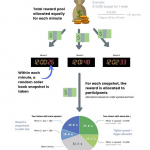The thinking on sidechains might be shifting.
While historically seen as an avenue for experimentation and increased operability on bitcoin’s network, the conversation is now framing the technology as a possible solution to the digital currency’s long-standing scaling debate.
The idea behind sidechains is to allow many coins with different sets of rules to be tied to bitcoin. For instance, one sidechain might feature the advanced privacy of MimbleWimble, while another might allow for much larger (or even smaller) block sizes.
The latter is what’s piquing interest in sidechains as a way to circumvent bitcoin’s highly contentious block size debate. It’s an idea which could theoretically make everyone happy, according to some.
But it’s not that sidechains achieve higher throughput, stressed Paul Sztorc, an economist at Bloq Inc, who invented a sidechain called Drivechain. With this model, though, participants would have the choice to move their bitcoin over to a sidechain with a larger block size (say, 2MB) while still remaining a part of the bitcoin network.
Sidechains or extensions?
However, there have been a flood of other ideas recently proposed for solving the block size issue that sidechains must now contend with.
Extension blocks, for example, were recently reintroduced by bitcoin startup Purse with the same goal of giving users choice over block sizes.
Yet, some developers, including one of the originators of extension blocks, Blockstream CEO Adam Back, believe extension blocks would downgrade security for users.
This is one reason why Sztorc’s Drivechain proposal – where what happens on one chain hypothetically can’t negatively impact what happens on others – appears to have the blessing of some developers who have opposed other recent scaling proposals.
Sztorc proposed the solution to the bitcoin developer mailing list, requesting feedback during CoinDesk’s Consensus 2017 conference.
Still, some developers argue it’s not one versus the other, but a matter of which technology works better for which applications.
“I can see a few potential use cases for extension blocks, such as adding MimbleWimble support to bitcoin,” said bitcoin developer James Hilliard. “But, I generally see sidechains as better due to the security isolation.”
Yet, some argue that Drivechain (and other variation of sidechains which rely on miners) might not work optimally in the current environment where mining hashrate is concentrated in the hands of a few.
For other developers, it depends on the details.
“In general, [Drivechain] sounds like a fine idea; but specifics are important,” said Bitcoin Core contributor Luke Dashjr.
What about ‘Segwit2x’?
Back to the issue of scaling, though.
In particular, Sztorc framed Drivechain as a better solution than the Digital Currency Group’s (DCG) recently unveiled ‘Segwit2x’ proposal.
The latter, which aims to steer the industry toward a transaction capacity boost, has found significant backing from bitcoin businesses and miners. For the boost, SegWit2x combines two tech upgrades: an optimization called SegWit, which previously stalled mainly due to lack of miner support, and a boost to bitcoin’s block size parameter.
Sztorc, like several others, is skeptical, though.
He told CoinDesk:
”I’m a little bit concerned about the New York agreement. To summarize, I think it’s a big cost. It’s unlikely to work. And even if it does work, it only gets us 2MB, which is not very much. I’m baffled that people think it’s progress. It’s a very small amount of progress at tremendous effort.”
Instead, he argued, Drivechain is superior for a number of reasons – primarily, perhaps, that sidechains “avoids coercion”.
SegWit2x requires a hard fork to scale the block size to 2MB. That’s a boost not everyone in the ecosystem agrees with, partly because it would mean an increase in the amount of data each user needs to store. And the change might lead to a network split if not everyone upgrades their software.
Meanwhile, sidechains don’t require a hard fork. And, Sztorc argued, users can spin up a sidechain featuring whatever block size they want, whether 8MB or 50MB, as 2MB is a one-time increase that some argue is too small.
Choices, choices
Further, some in the bitcoin community believe the volunteer developer team around the Bitcoin Core implementation has effectively become a monopoly, suggesting that the group has quashed outside ideas.
Drivechain, according to Sztorc, would eliminate both of these undesired issues, since users would get to choose exactly what they want, and different developer groups could form around different sidechains, boosting developer diversity.
Sztorc suggested Drivechain could be deployed within the same six-month timeframe as DCG’s recent proposal, even with the proposal’s requirement for a bitcoin soft fork (a backwards-compatible way of making changes to bitcoin’s consensus rules).
This upgrading process has recently become more politicized with SegWit’s proposal. But, Sztorc doesn’t think a soft fork will be a problem for Drivechain, since it gives “everyone what they want”.
Still, as with most other major proposals for improvements to bitcoin’s code, the community will have to just wait and see.
Abstract circle image via Shutterstock
Disclosure: CoinDesk is a subsidiary of Digital Currency Group.














